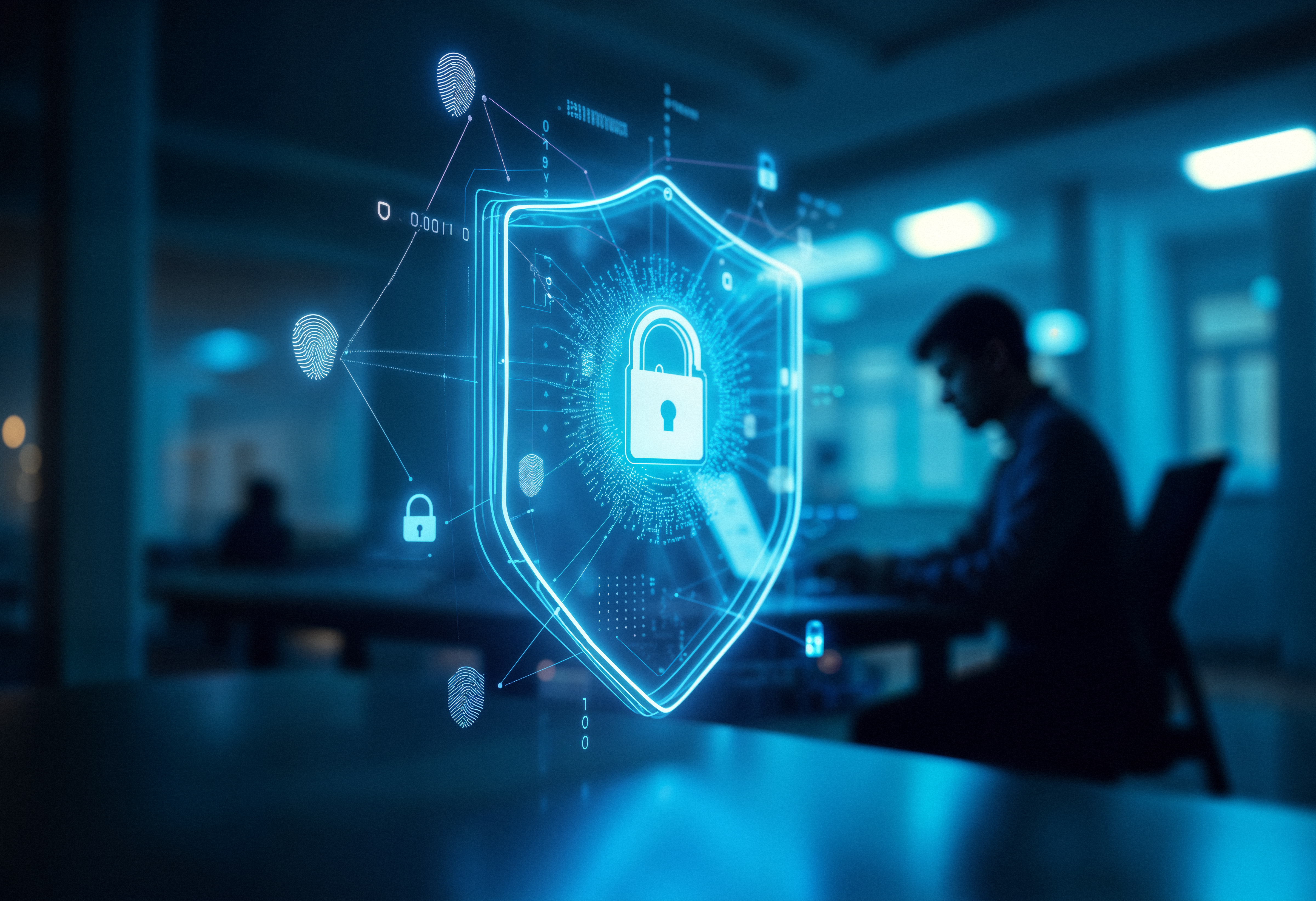
The Evolving Face of Cybercrime
When most people imagine a cybercriminal, the image of a lone hacker in a hoodie might come to mind—a rogue operator seeking to wreak havoc from the confines of their bedroom. But this perception couldn’t be further from the truth. The modern cyber threat landscape is far more organised, professional, and dangerous than most realise.
Today, cybercrime operates as a global industry, with hackers-for-hire, cyber intrusion and Hacking-as-a-Service companies structured like legitimate enterprises. Many of these organisations offer employee benefits, including pensions, annual leave, and performance bonuses. These groups operate with the efficiency of any commercial enterprise, with specialised teams for reconnaissance, exploit development, and social engineering.
The National Cyber Security Centre's (NCSC) Commercial Cyber Proliferation Assessment highlights how some cyber intrusion companies are even marketing their services openly. This includes developing hacking tools and malware for sale, targeting governments, businesses, and individuals indiscriminately. Their operations are supported by fake webpages, social media accounts, and even professional marketing campaigns designed to lure victims in.
A False Sense of Security
Another common misconception is the belief that "it won’t happen to me." Many assume that cybercriminals only target large corporations, high-profile individuals, or government agencies. In reality, attackers don’t care who you are. Their motives often come down to opportunity and ease of access rather than the perceived value of the target.
Cybercriminals cast a wide net. They exploit vulnerabilities indiscriminately, whether their victim is an adult, a child, or a pensioner. As the NCSC notes, attackers use automated tools and phishing schemes that can target thousands of individuals simultaneously. Once a target is caught, they move quickly to exploit any potential weaknesses.
With attackers becoming increasingly sophisticated, even small mistakes—such as clicking on a link in a phishing email or failing to verify the legitimacy of a webpage—can lead to devastating consequences.
Why Vigilance Matters
The reality is that cybercriminals don’t discriminate, and their tactics are becoming more advanced every year. By understanding the evolving nature of these threats, businesses and individuals alike can take proactive steps to protect themselves.
The importance of awareness training and a strong cybersecurity posture cannot be overstated. In a world where attackers are innovating faster than ever, prevention remains far better—and far more cost-effective—than cure.
2024 was a pivotal year for cybersecurity. High-profile breaches underscored the vulnerabilities many organisations face, particularly those with complex networks across multiple office locations and workforces now very much accustomed to working remotely.
For every businesses, the challenge is great but for mid-sized companies – businesses of 200-1500 employees - the challenge is far greater, as they navigate limited resources while protecting teams often spread across various sites, home offices, and remote locations.
As we look ahead to 2025, the question isn’t if your business could be targeted, but whether you’re prepared when it is.
2024’s Most Alarming Cyber Incidents
The past year revealed the devastating effects of cyberattacks on even the most recognisable organisations:
- Ticketmaster: A breach disrupted thousands of transactions, leading to widespread customer dissatisfaction and highlighting vulnerabilities in data security.
- Transport for London (TFL): Hackers targeted systems critical to public infrastructure, exposing weaknesses that threatened operational continuity and public trust.
- The British Library: A ransomware attack crippled the institution into 2024, with recovery costs potentially soaring to £7M, far exceeding the initial £650,000 ransom demand.
- MoneyGram: A high-profile breach resulted in sensitive data being stolen, affecting millions of users globally and undermining trust in the financial service provider’s capabilities.
- Royal Mail: Another attack disrupted international delivery services for weeks, causing significant delays and reputational harm.
Not even the Ministry of Defence (MoD) is safe from attack! In May last year, they suffered a breach when a contractor-operated payroll system was compromised. This system contained personal information—including names, bank details, and home addresses—of approximately 270,000 current and former UK military personnel. The attack, attributed to a "malign actor," potentially linked to a foreign state, highlighted the critical need for robust supply chain security and the far-reaching consequences of such vulnerabilities for national security.
These examples highlight a stark reality: even global, well-resourced organisations can fall victim to cybercrime. For multi-site businesses managing dispersed teams, adopting a proactive approach is no longer optional—it's essential.
You’re Only as Strong as Your Weakest Link
One of the most overlooked vulnerabilities isn’t technology—it’s people. According to the 2024 Cyber Security Breaches Survey:
- 21% of businesses experienced phishing attacks, the most common method for exploiting staff vulnerabilities.
- 73% of businesses see cybersecurity as a priority, but only 31% provide ongoing staff training.
Attackers are becoming more sophisticated in exploiting human error. A common phishing tactic we’ve observed involves targeting new hires. Here’s how it works:
- The attacker monitors the company on LinkedIn, focusing on employees who’ve just announced their new role.
- Shortly after, the new recruit receives an email, seemingly from the CEO or Founder, with an address that looks legitimate.
- The email creates a false sense of urgency, asking the new hire to purchase online vouchers worth hundreds of pounds to “help with a business task.”
- Eager to impress and hesitant to question senior leadership, the recruit completes the purchase—leaving the company to bear the financial loss.
In a world where your teams can work from anywhere these attacks are increasingly common. Many breaches begin with a simple email but have far-reaching consequences.
Prevention is always better than cure
- Awareness: Regular training empowers staff to recognise phishing attempts and feel confident questioning suspicious requests.
- Vigiliance: Creating a culture of vigilance—where asking questions is encouraged—helps close gaps that attackers exploit.
At Formation Tech, we make cyber awareness a cornerstone of our onboarding process, incorporating dedicated sessions into every new recruit’s induction. This ensures that from day one, our team members are equipped with the knowledge to identify potential threats and understand the importance of staying vigilant.
Beyond induction, we maintain this focus throughout their careers, reinforcing awareness with ongoing training and open communication. By fostering a culture where asking questions is encouraged and no concern is considered too small, we empower our people to become an active part of our cybersecurity strategy.
When organisations prioritise staff awareness and create an environment that values vigilance, they significantly reduce risks and transform their teams into a robust first line of defense against evolving cyber threats.
Key Statistics from the Cybersecurity Landscape
The UK government survey paints a clear picture of the risks facing businesses:
- 39% of businesses reported identifying a cyberattack in 2024, with medium-sized organisations among the most targeted.
- For businesses with 250+ employees, the cost of a breach often exceeds £10,000, highlighting the financial and operational strain even a single incident can impose.
- Despite these risks, only 12% of businesses review cybersecurity measures monthly, leaving many unprepared for evolving threats.
These figures reinforce the need for robust, ongoing security practices—particularly for organisations managing teams and systems spread across multiple locations.
Looking Ahead: How to Protect Your Business in 2025
As cyberattacks grow more sophisticated, organisations must shift from reactive to proactive measures. Here’s how:
- Adopt Proactive Assessments: Regular Penetration Testing and Cyber Threat Assessment Programs (CTAP) can identify vulnerabilities before they become exploited. Waiting for annual reviews is no longer enough.
- Strengthen Employee Awareness: With staff often being the weakest link, investing in training programs to spot phishing attempts and other common tactics is critical.
- Streamline Your Cybersecurity Strategy: Consolidate vendors and tools to reduce complexity and ensure consistent oversight across your network.
- Embrace Solutions That Balance Security and Usability: A strong cybersecurity posture doesn’t have to hinder productivity. The right tools enhance protection without creating friction for users.
Make Cybersecurity Your New Year’s Resolution
2025 offers the perfect opportunity to take control of your cybersecurity. Start the year with effective housekeeping—identifying gaps, addressing vulnerabilities, and building a framework that prioritises resilience and protection.
If you’d like to find out more, join our upcoming Cybersecurity Learning Webinar to learn how to:
- Identify and address your organisation’s weakest links.
- Protect dispersed teams across office, home, and remote locations.
- Strengthen your defences with expert strategies.
📅 Date: Tuesday 4th February
⏰ Time: 11:00 GMT
🎯 Sign Up: https://info.formationtech.co.uk/cybersecurity-webinar-2025
Let us help you navigate the complex landscape of cybersecurity and start the year with confidence.


